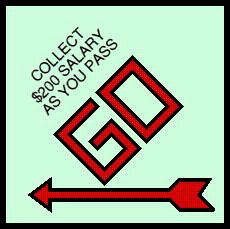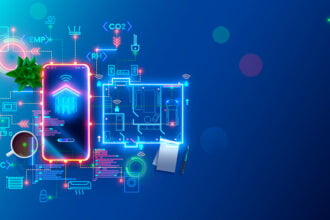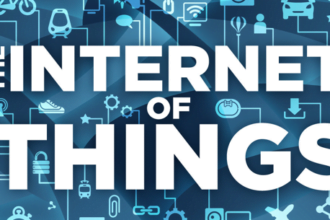When introducing the idea of “information as a product or service,” it’s fascinating to see how different companies want to start.
I don’t mean start the conversation – that part of the process seems to take care of itself. I will send emails and engage in phone & hallway conversations to gauge initial interest; when we sit down for our first chalk talk, the IoT Framework helps to keep things going.
When introducing the idea of “information as a product or service,” it’s fascinating to see how different companies want to start.
I don’t mean start the conversation – that part of the process seems to take care of itself. I will send emails and engage in phone & hallway conversations to gauge initial interest; when we sit down for our first chalk talk, the IoT Framework helps to keep things going.
No, I really mean where does a Business Unit (BU), a product line, an engineering team start the journey. Remember, industrial manufacturers historically (and quite correctly) see their role as “making & shipping Stuff”, and the shift to “providing & supporting Data-Enabled Stuff” is a pretty big leap. In addition, there are plenty of other things going on – there aren’t many teams with spare time on their hands, looking for a Next Big Project to fill the idle hours.
As I make these connections with BUs in our organization, I am seeing patterns in how the product teams are adding Information as a fundamental part of their offering; they fall into these categories …
Explorers: These teams come to the table with a specific destination in mind – a new product or product extension, maybe some data analysis for customers or for internal engineering – but they aren’t quite sure how to get there. Typically, they are taking an evolutionary step from a product or capability that they already have. For example, Companies O and L manufacture add-ons for trucks / transports / tractors – and has access to all of the operating data in real time. Their big idea is to capture that data and present it back to the end customer, for predictive maintenance, billing automation, route optimization, and similar things.
How can we help take the next step? Engage the team, find out who has energy – and start to sketch out a path to the end. You may find the end vision changing a bit as the team tries different routes – but most likely you will land upon one of the five Framework components that is the current Puzzling Roadblock. Spin up a mini-project to attack that Roadblock – see if you can’t knock it down and get product development underway in earnest.
Spelunkers: These units have a fairly specific feature or capability in mind, but don’t quite know how to translate that into something the Customer will value. This could be a team that has not yet added sensors to the device, and are thinking too much on that piece of the Framework. If there is no clear idea yet how end customers might make use of this data – well, we are searching a dark cave trying to find some gold. Companies E and X, for example, are talking about pulling data from their Awesome Widgets, but they don’t have a use case that is quickly and easily defined.
How can we help take the next step? Focus on the revenue potential; roughly speaking, how much income might an offering like this bring in annually? If the number is big enough, it might focus the attention a bit more; if we can’t figure out who would actually pay for such a feature, maybe it’s best we go out to the customers and see where their interests lie.
Old Guard: These folks already have software and systems as part of their product offering, and see IoT concepts as just another technology advancement. They are not necessarily resisting ideas from the outside – but they may be unaware how different and [potentially] difficult the tech challenges around mobile or cloud will be, or how their relationships with their customers and channels will change. Companies H, S and D are a bit like this – they are well down their own path and are actively getting feedback from customers. They did like the breakdown of the Framework and are interested in hearing more as bits of that get fleshed out.
How can we help take the next step? Share whatever good stuff we have – project templates, business plans, technology components, and stories of success and failure – and invite these folks to do the same with their intellectual property. The Old Guard can benefit by bringing in new thinking, new possibilities; and the rest of the company can benefit by sharing in tech and knowledge that has brought value to the Old Guard.
Watchers: For some, this entire conversation is brand new and totally unexpected. Why are we talking about this? Of course, when the lead-in is all about increasing revenues and share with innovative technology, they do listen, and may even get deep into the brainstorming. But this stuff was not on their radar screen when they completed their strategic plans for the coming year – too many competing priorities, maybe this goes on the back burner. Company B fits into this category – and we all understand that “watch and wait” is a totally OK place to end up. A recurring theme for well-run teams is to keep focused on a “critical few” tasks – and this IoT stuff would just be a distraction from their plans.
How can we help take the next step? Provide visibility to and connection with other BUs and projects, and answer any questions these folks might have. Assure them that this IoT stuff is not something that they have to do via some corporate edict. At the same time, suggest that they keep their ears to the ground – these topics may come up when talking with customers and channel partners, and they (and you) should be ready to pick up the conversation again.
Enthusiasts: There will be a few groups of high energy folks that are asking you for help on IoT before you get a chance to ask first. These folks see the opportunity, may even see forces inside their own markets signalling intent and making moves already. They have the vision, but no path to get there – no sensors on devices, no experience in the tech, and a few preliminary ideas on how to monetize. Company C fits into this category – a combination of insightful product line management and a market space that is being aggressively pushed into the information age by major OEMs.
How can we help take the next step? Latch on and support as much as possible – and drive the conversation to something specific and actionable. It might be a mini-project, a little proof-of-concept, to get management or customers thinking big; or, it could be some structured thinking and dialogue to focus on a single target, a “first deliverable” that will get the ball rolling. At the same time – start educating the team about the need for an overall process and technology architecture that we need to build towards – anticipating explosive growth.










